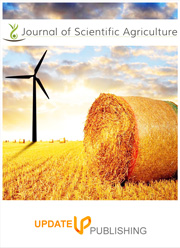An anatomical screening of white jute accessions for fibre content
DOI:
https://doi.org/10.25081/jsa.2020.v4.6340Keywords:
D2 statistics, variability, correlation, Fiber content, White jute, Corchorus capsularis L.Abstract
The present study was conducted to evaluate the performance of 24 advanced lines of white jute and four check varieties ( CVL-1, CC-45, BJRI Deshi Pat-7 & BJRI Deshi Pat-8) for screening out high yielding and better quality fibre through an anatomical approach at JAES, Manikganj. The experiment was conducted in randomly complete block design (RCBD) with three replications. The cultivars revealed significant differences among them for all the characters with range of variability. The highest bark thickness (2.32 mm) was noticed by the accession C-5036 which performed significantly better than the two checks and lowest was recorded by C-5126 (1.07 mm). The variety BJRI Deshi Pat-8 observed significantly the highest number of pyramid (54.13) whereas the lowest was recorded by the varieties BJRI Deshi Pat-7 (28.23). The accession C-5117 showed significantly the highest number of layer (10.29) whereas the variety, BJRI Deshi Pat-7 showed significantly lowest number of layer (6.32). The accession C-2305(92.37) and C-12221 (91.19) significantly showed top two number of fibre bundle, however, the lowest number of fibre bundle was recorded by BJC-5105(42.79). The largest area of pyramid was observed by the accession C-5036 (46.85 sq. mm) whereas the lowest was showed by BJC-5105 (14.50 sq. mm). The differences between Phenotypic Coefficient of Variation (PCV) and Genotypic Coefficient of Variation (GCV) were little for all the characters indicating these characters were less influenced by the environment. Heritability and genetic advance (GA) were high for number of pyramid, number of fibre, bundle and Area of pyramid (sq.mm). Three accessions(C-12221, C-2305, C-5036) are showed the best performance than other accession on our screening program. These accessions are included in cluster V among the five clusters which exhibit the highest performance in all parameter except number of pyramid and may be used in further hybridization of jute.



 .
.